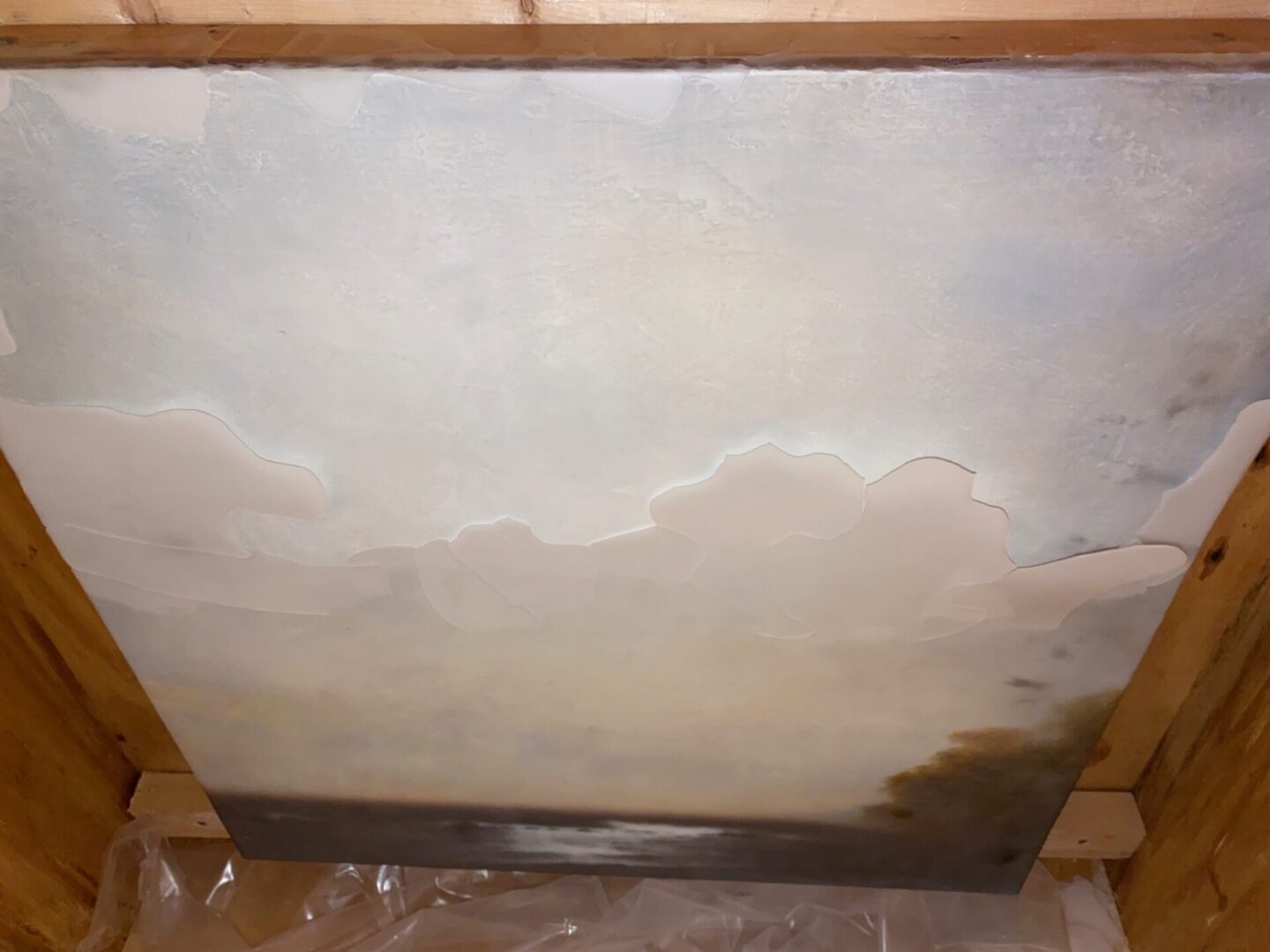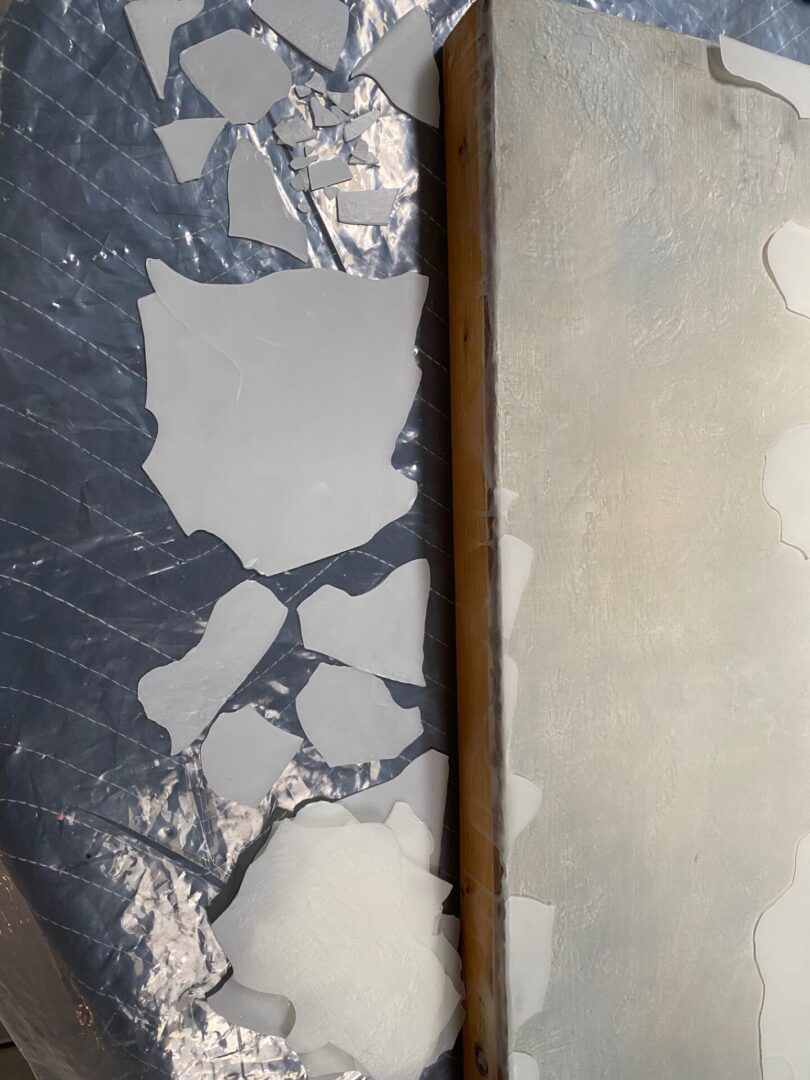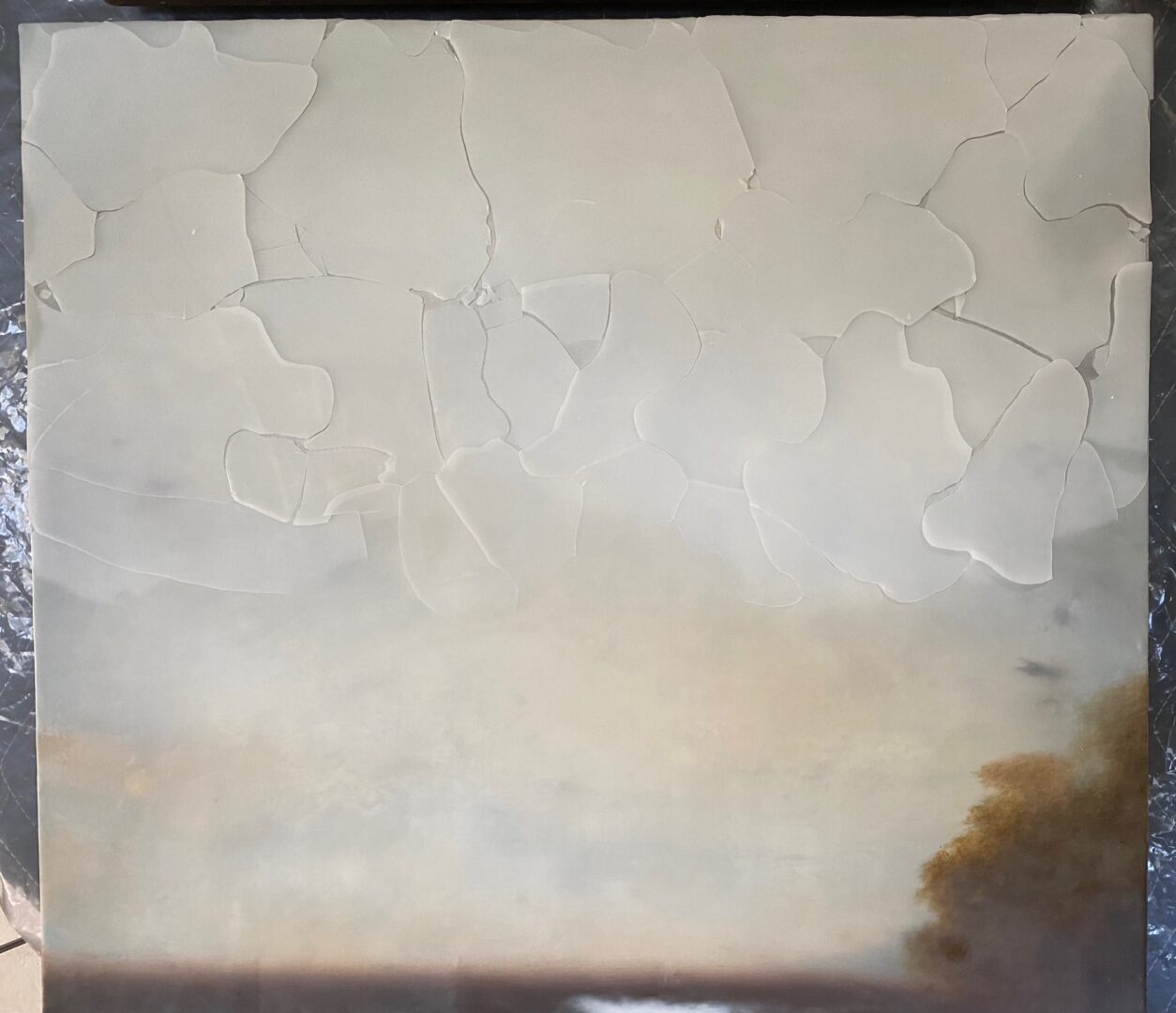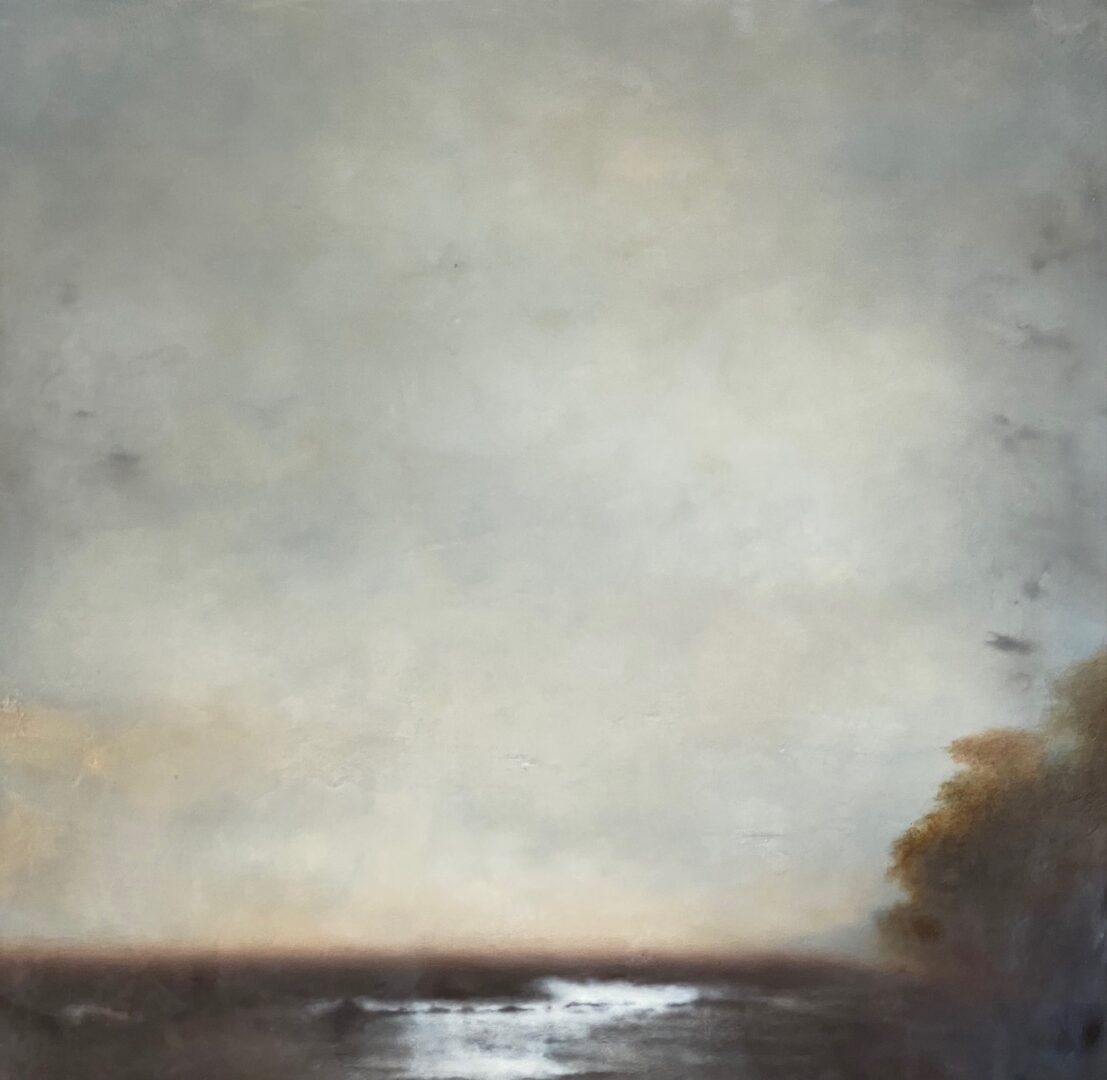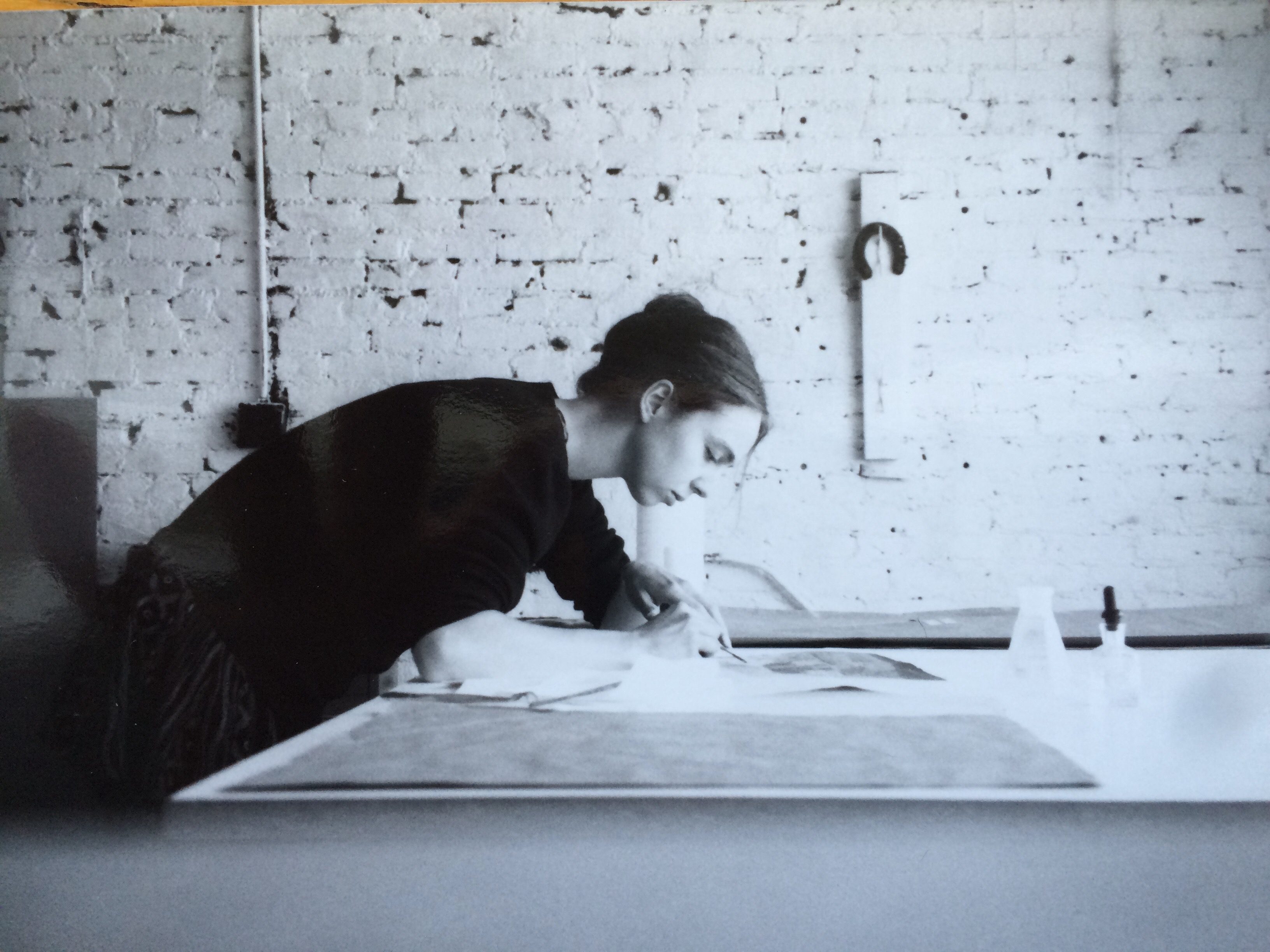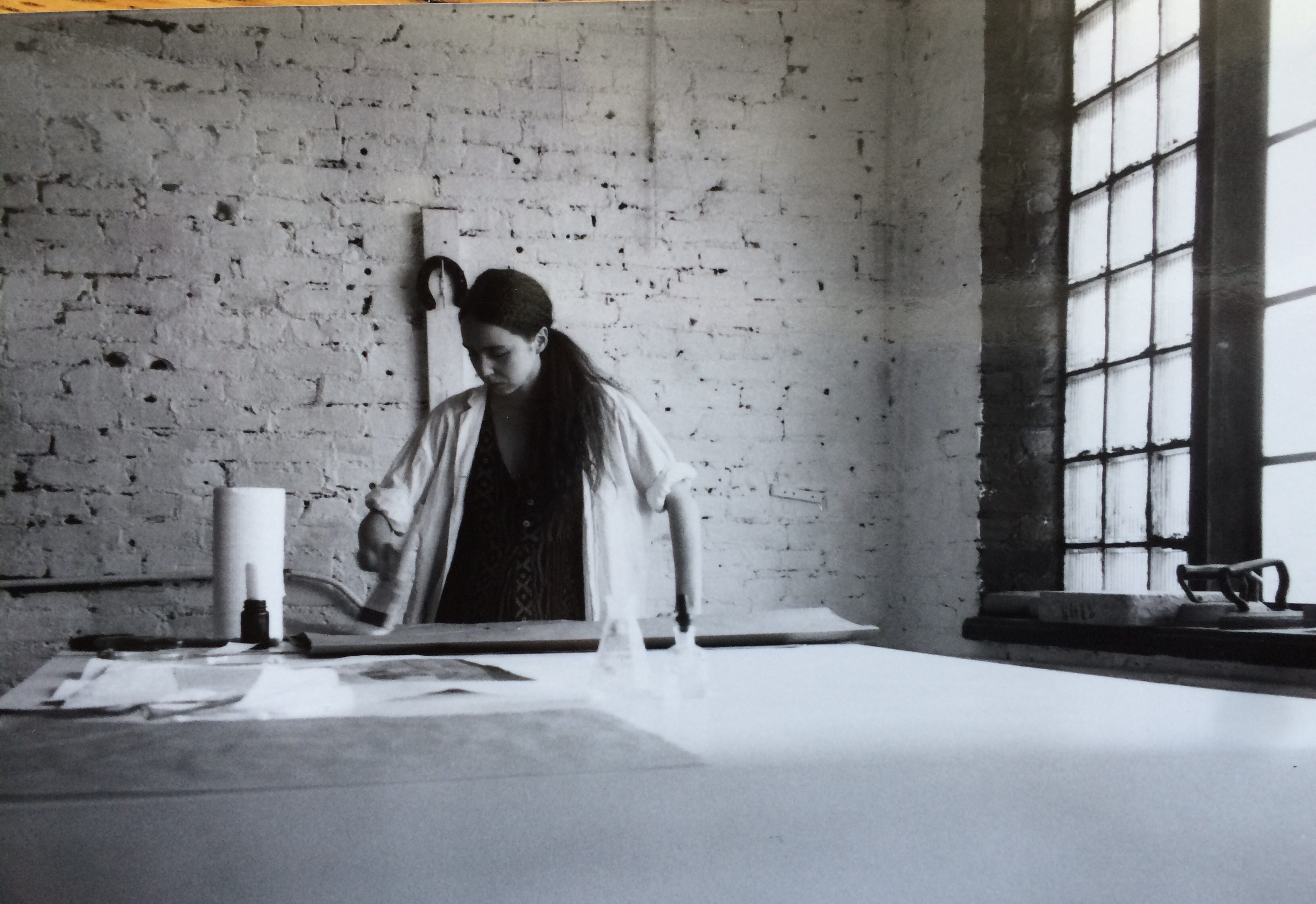Our studio provides the conservation of paintings on different types of supports. Those executed on canvas or wooden boards, as well as those on leather or metal support are the subject of deep attention and professional care by our highly trained conservators. An additional department at our studio is dedicated to the conservation of frescoes and wall paintings.
During our work, we face a wide range of issues, including varnish discoloration, dirt and grime accumulation, holes, tears, paint flaking or blistering, over-paintings, or paint loss. All these factors greatly disturb the perception of the image, and reduce the artistic quality of the object.
Fortunately, most of this structural and aesthetic damage can be successfully fixed. The paintings under our care are precisely analyzed, with the artistic form, history, creator's intentions, and present condition determining the main direction of the future conservation. Before conservation treatment can begin, the condition must be fully recorded and documented with the use of photographs. After an appropriate method is chosen from the tests, a wide range of conservation treatments could be undertaken to restore the original brilliance of the art work. Typical treatments in our studio include structural consolidation, surface cleaning, discolored varnish and overpainting removal, relining or strip-lining, loss filling, inpainting, and varnishing. It is important to mention that all materials used are reversible and compatible with the original substance of the art work.
Our Work
Portrait - Oil on canvas - 18th century
On left: the painting before conservation with the details showing the discolored varnish, holes, and paint loss.
On right: the painting after conservation.
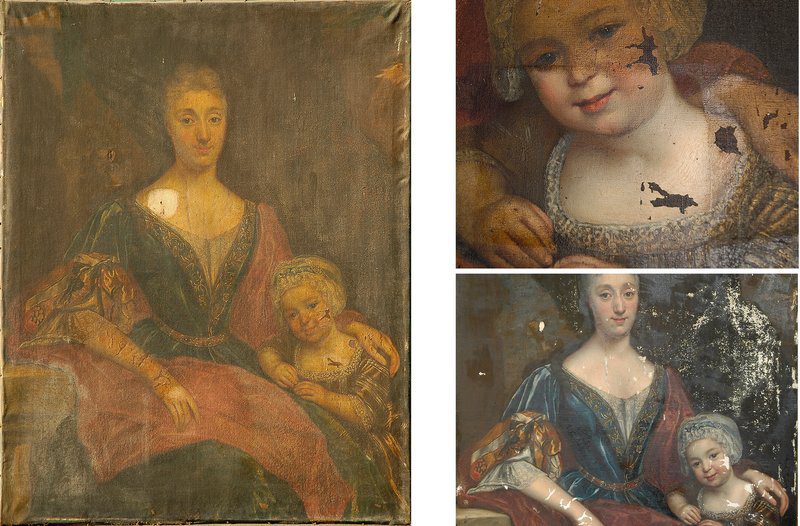
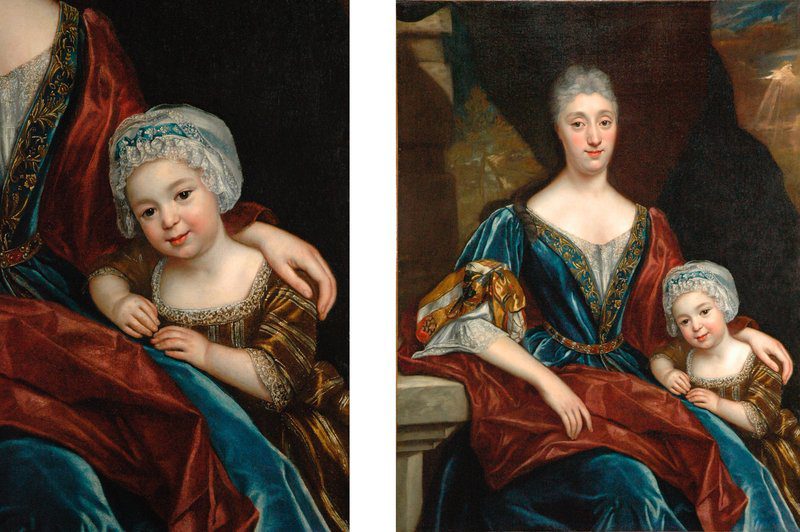
French landscape - Oil on canvas - 19th century
On left: painting before conservation. Visible darkened varnish, craquelures, creases in the canvas, and grime with dirt on the paint layer.
On right: painting after conservation. Varnish was removed, creases were flattened, paint layer was carefully cleaned and inpainted, and new varnish was applied.
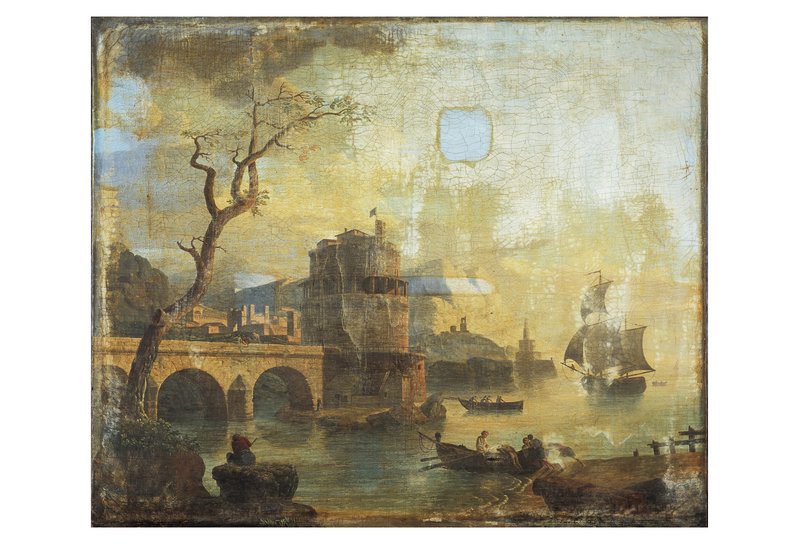
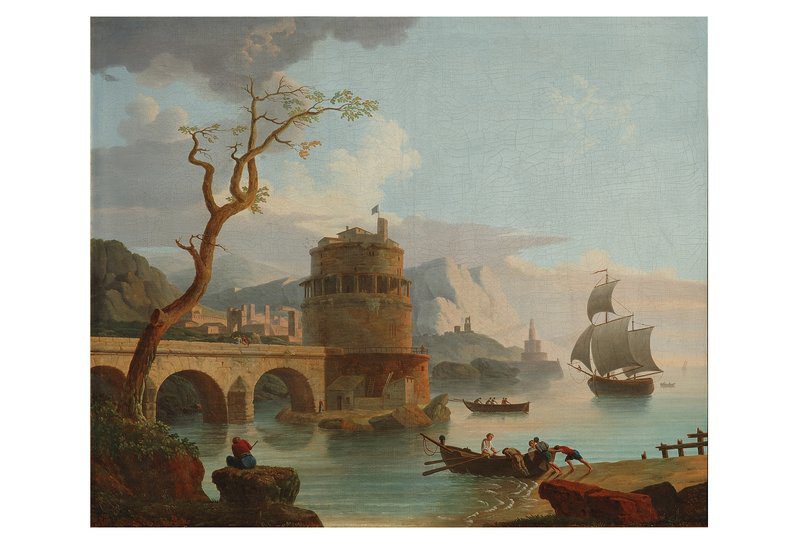
French landscape - Oil on canvas - 19th century
On left: painting before conservation. Significant losses in the paint layer, and torn canvas. Strongly darkened varnish, and layer of dirt.
On right: painting after conservation. Painting was cleaned, and was then relined. The paint losses were filled and inpainted. A new varnish was applied.
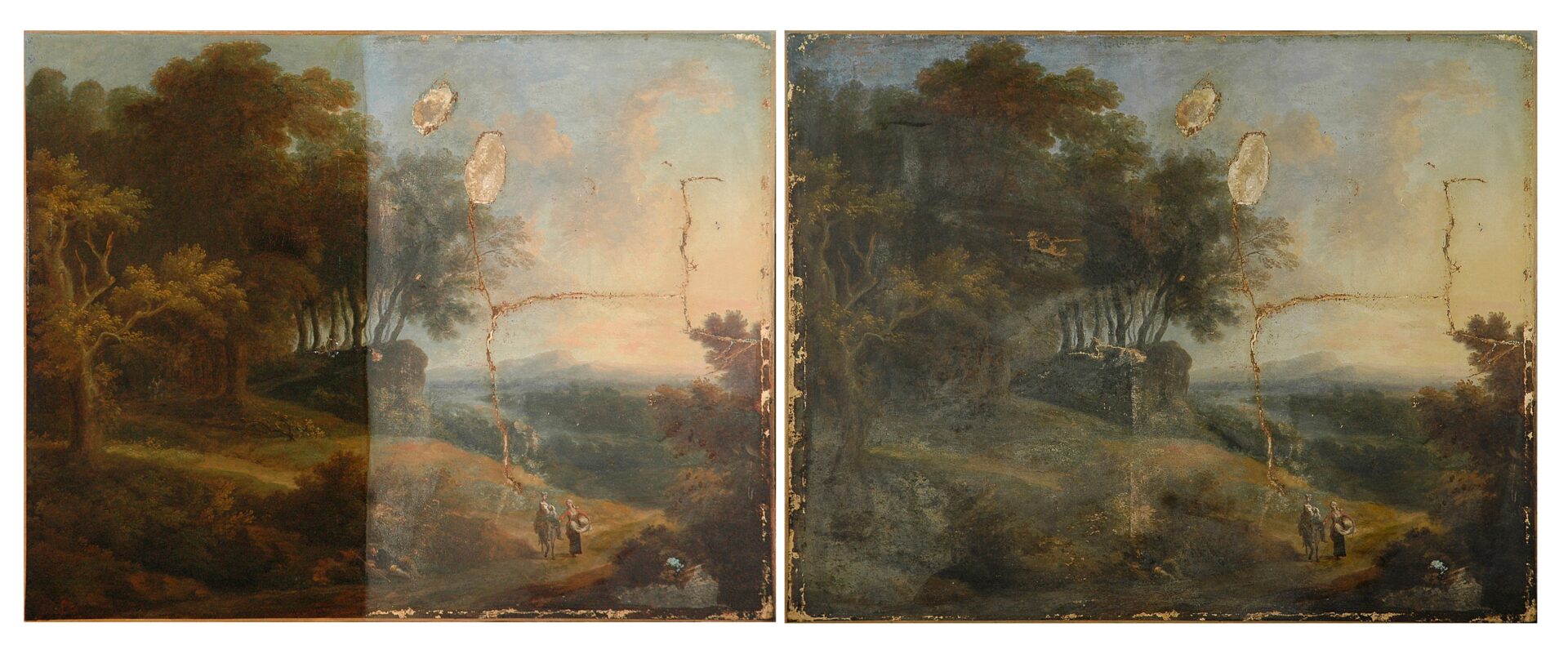
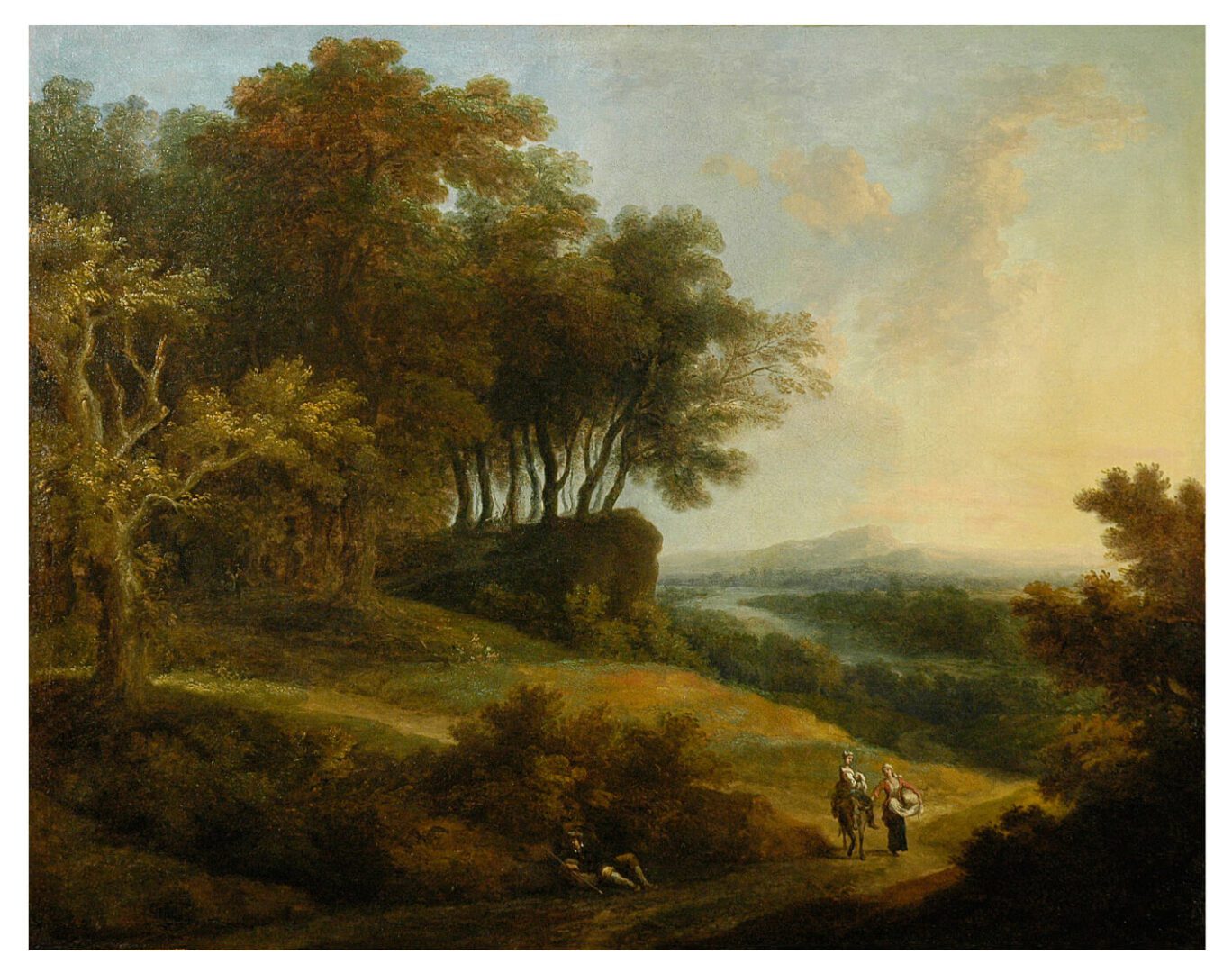
German village - Oil on canvas - 19th century
On left: painting before conservation. Darkened varnish with grime and dirt on the paint layer. Damaged canvas and losses of the paint layer.
On right: painting after conservation. The painting was cleaned and the darkened varnish was removed. The canvas was reinforced with patches and the losses were reconstructed and inpainted. A fresh varnish was applied.
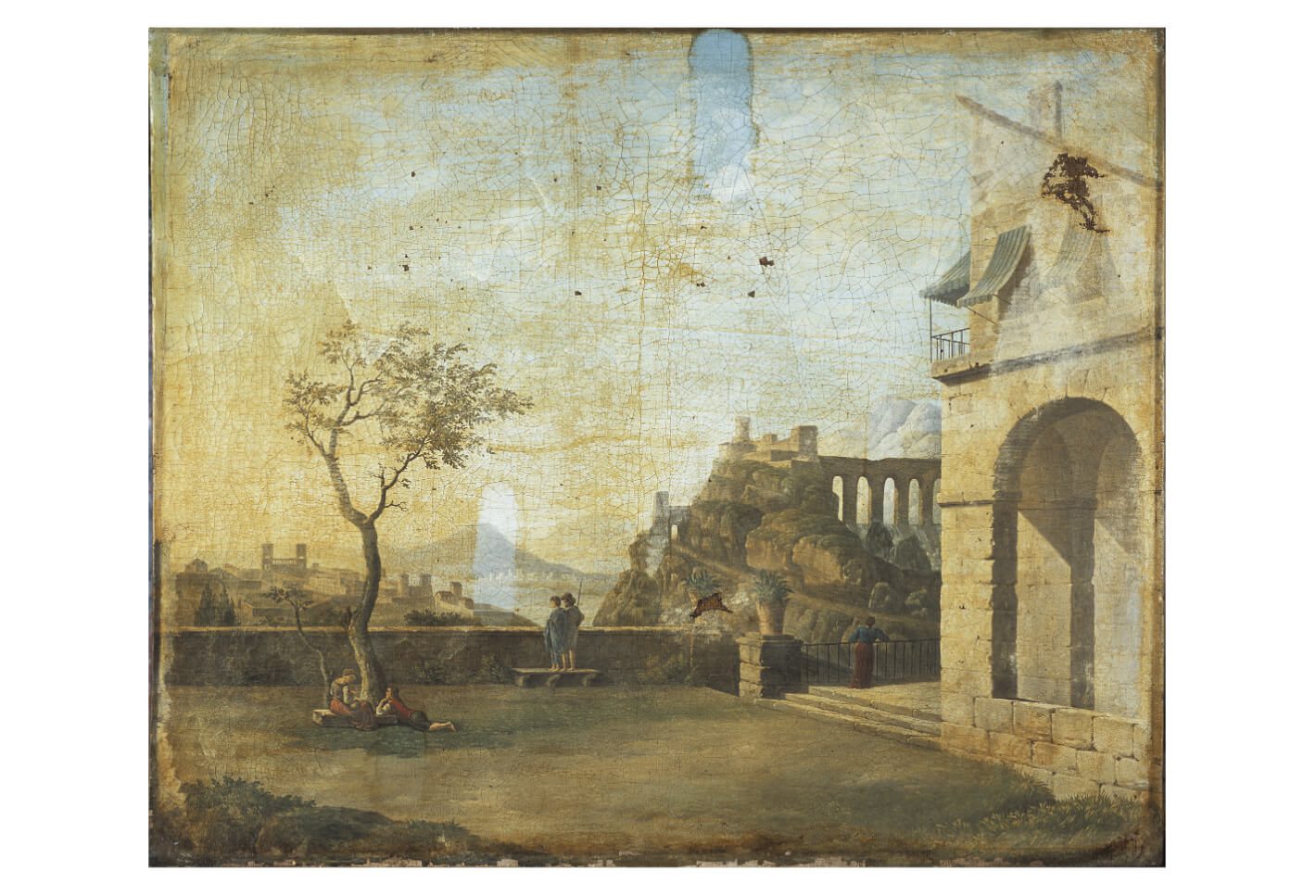
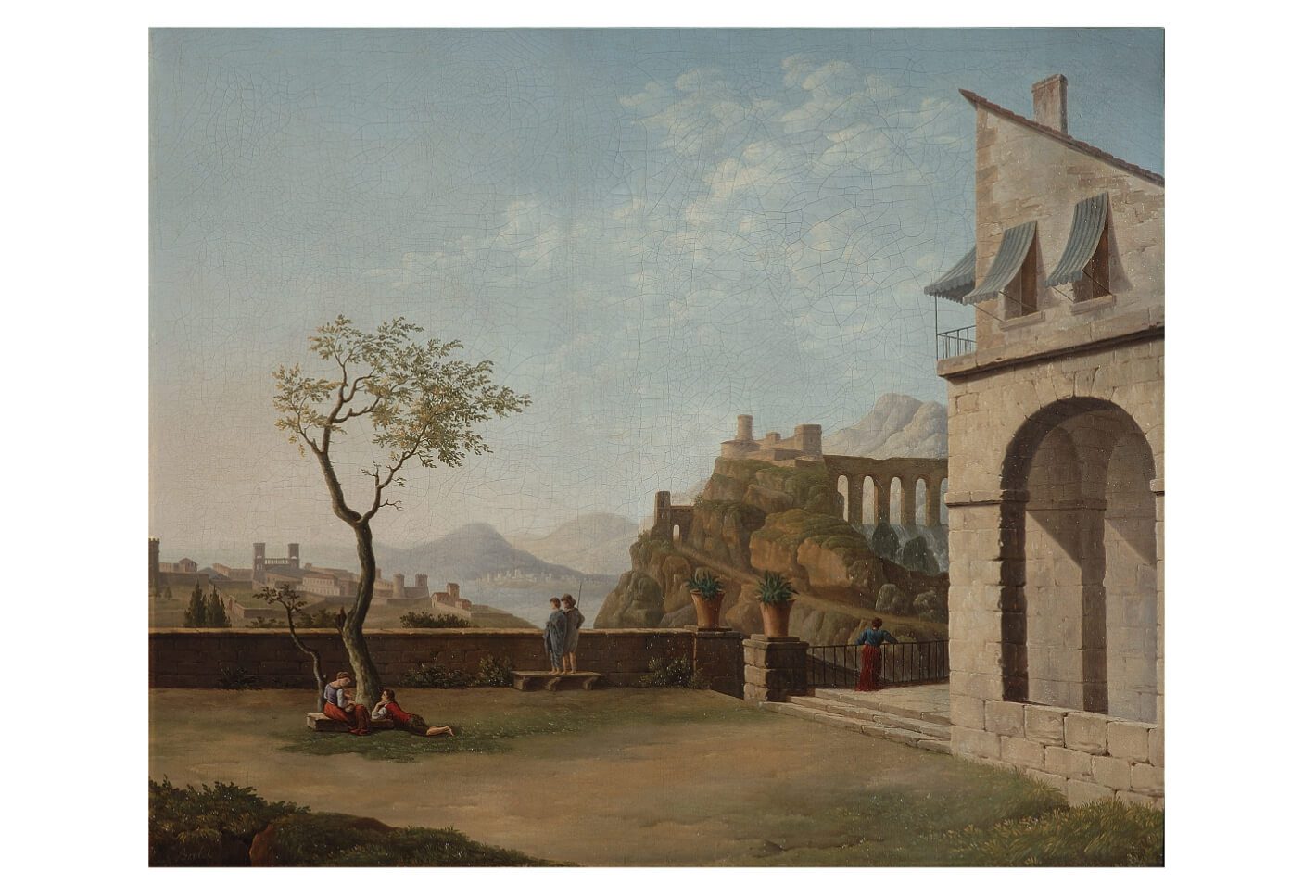
Puppet show - Oil on canvas - 19th century
On left: painting before conservation. Drastic paint layer losses. Delaminated paint layers.
On right: painting after conservation. Paint layer was first consolidated. The gesso layer was restored. Then, significant reconstruction of the paint layer through inpainting was performed.
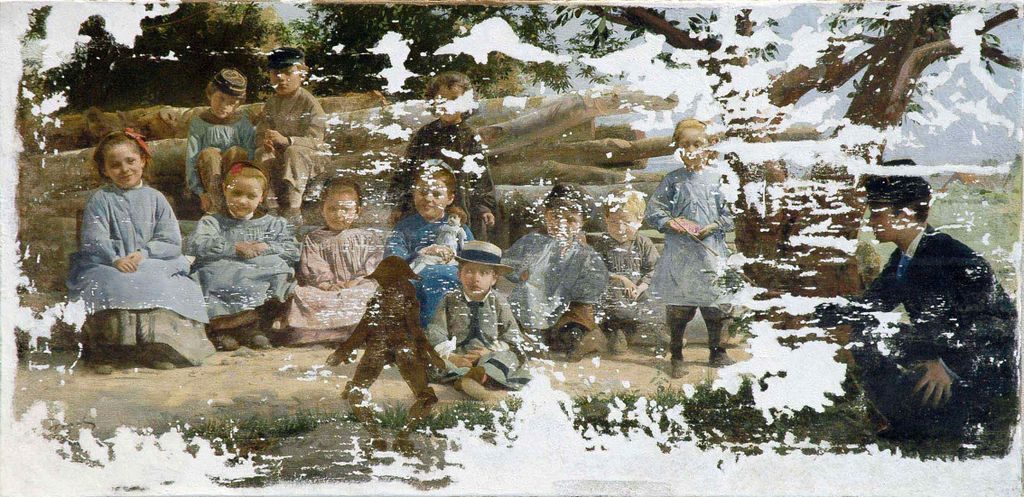
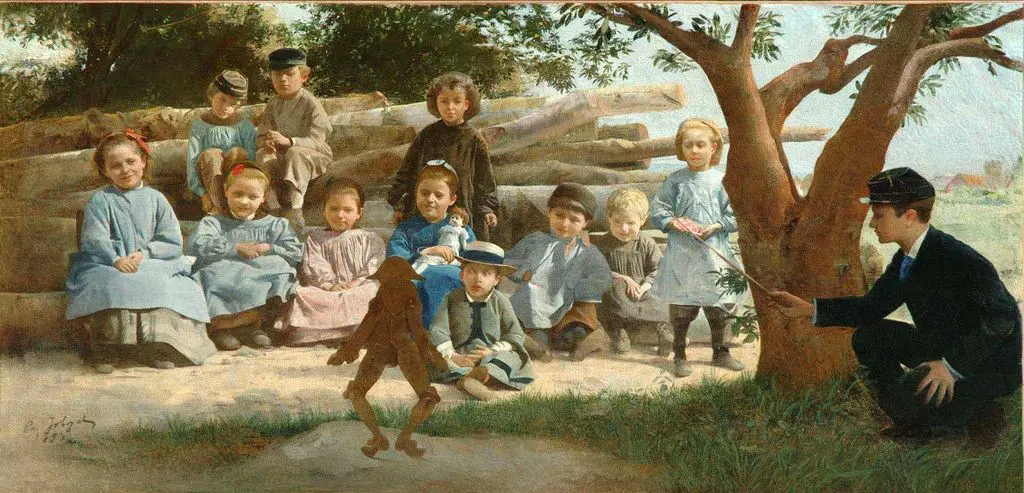
10th Station of the Cross by Melville Steinfel - Wet fresco technique - 20th century - Epiphany Church in Chicago
On left: fresco before conservation. Evident damages resulting from water leak. Losses of the paint layer. Layer of dirt over entire surface.
On right: fresco after conservation. The surface of the fresco was cleaned, and the missing fragments of the image were reconstructed.
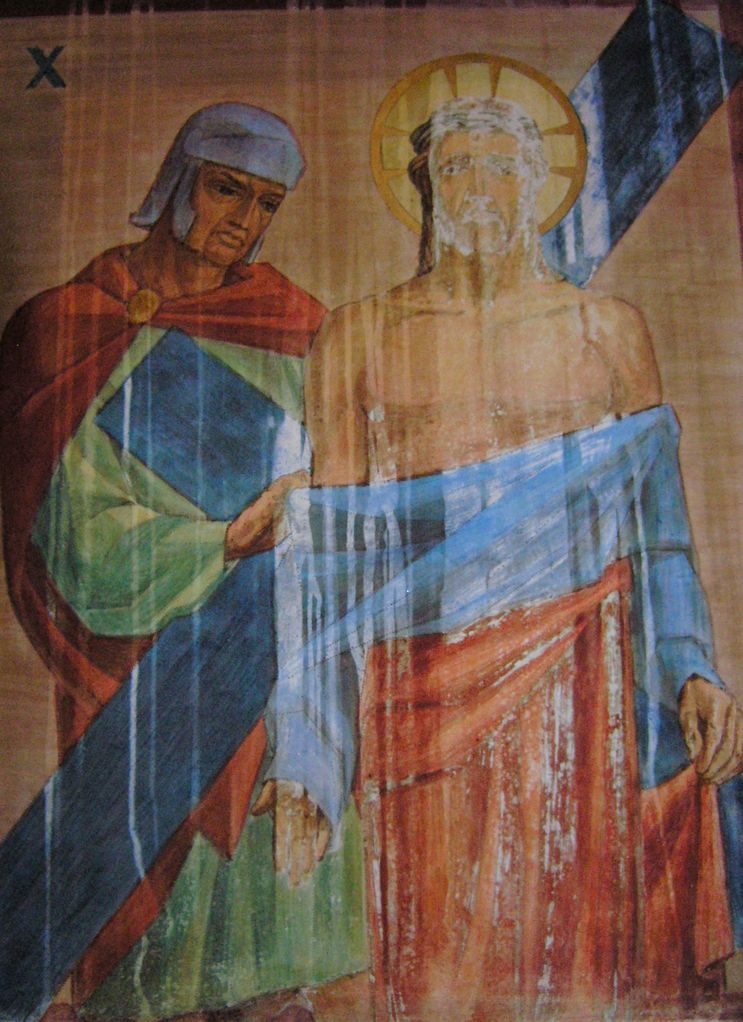

6th Station of the Cross by Melville Steinfel - Wet fresco technique - 20th century - Epiphany Church in Chicago
On left: fresco before conservation.
On right: fresco after conservation.


Icon - Tempera on wooden panel - 18th century
On left: before conservation. Significant losses of wooden support. Wooden structure weakened with insect pests, which left numerous holes. The paint layer was strongly dirty and discolored. The paint and gold layer had evident losses and abrasions.
On right: after conservation. Wooden losses were reconstructed. Wooden structure was consolidated. Holes were filled, and the gesso was restored. The missing fragments of the paint layer were inpainted. The icon was regilded using the original technique.

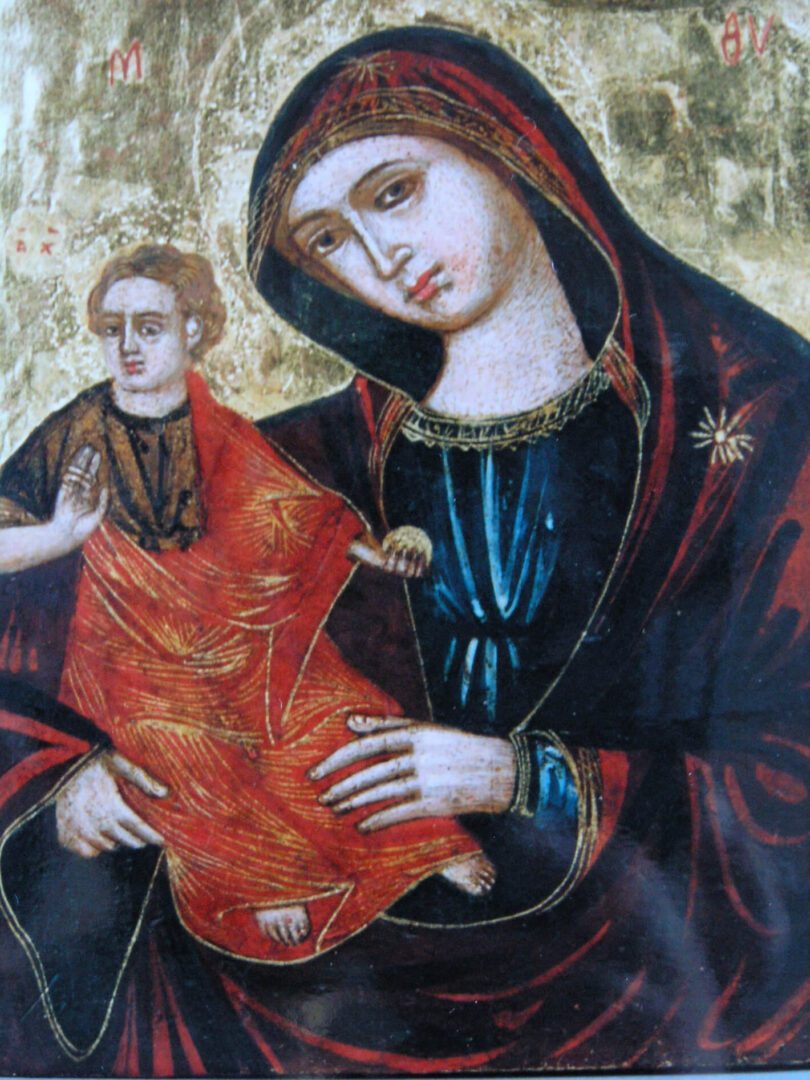
Icon - Tempera on wooden panel - 19th century
On left: before conservation. Evident cracks in the wooden structure, with losses of the gesso and gold leaves. The paint layer was covered with a network of cracks.
On right: after conservation. The structure of the wood was consolidated and the gesso was restored. The gold leaves were reconstructed using the same technique as originally used, water gilding. The paint layer was cleaned and inpainted.


Untitled by Hiro Yokose - Oil and Wax Painting - 2006
1st Row: paintings before conservation. Delamination and cracking of the wax layer is visible.
2nd Row: painting after conservation. The delaminated and cracked wax layer was fixed through a complex treatment involving gluing the surfaces with hot temperatures and selected chemicals.
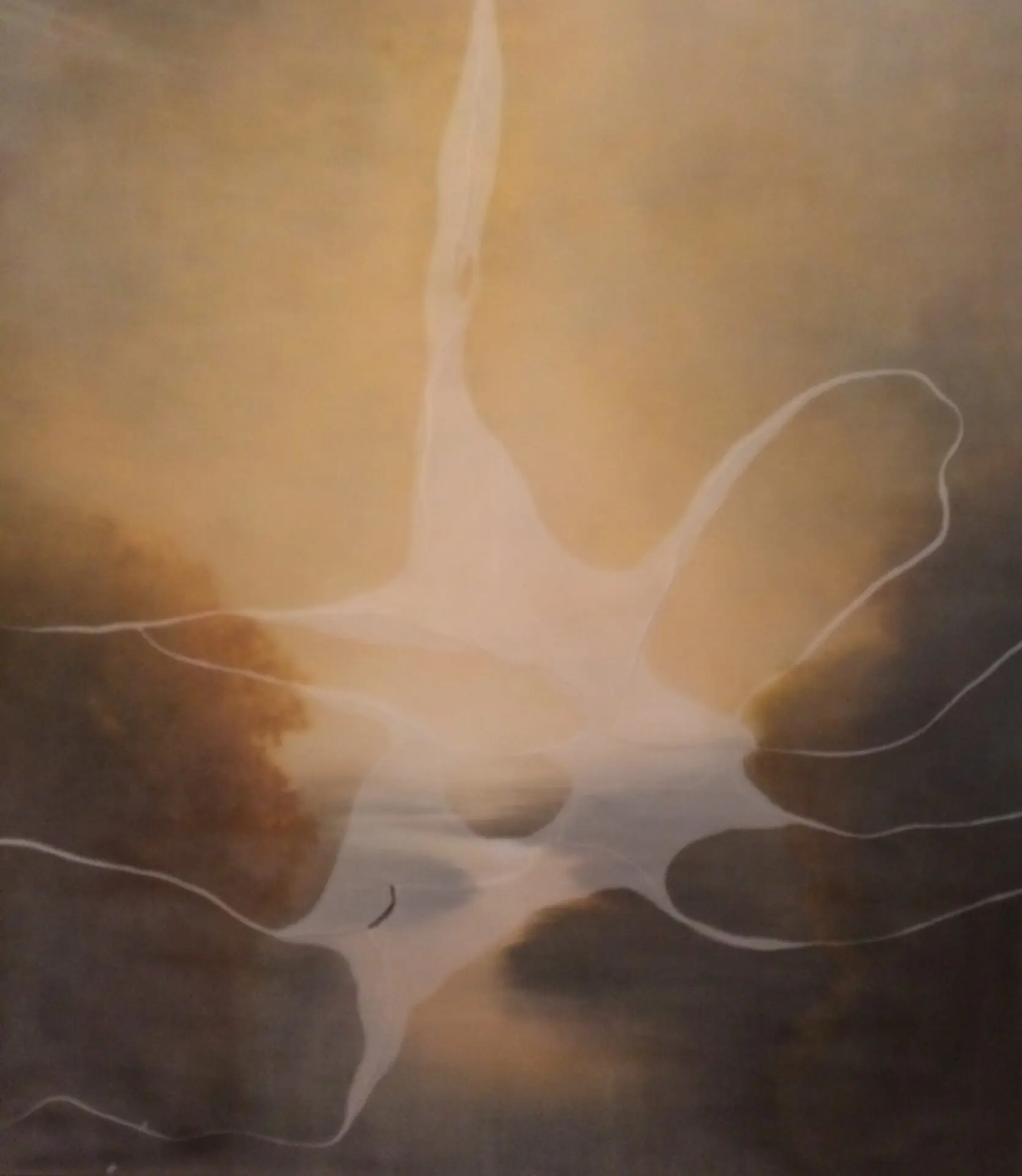
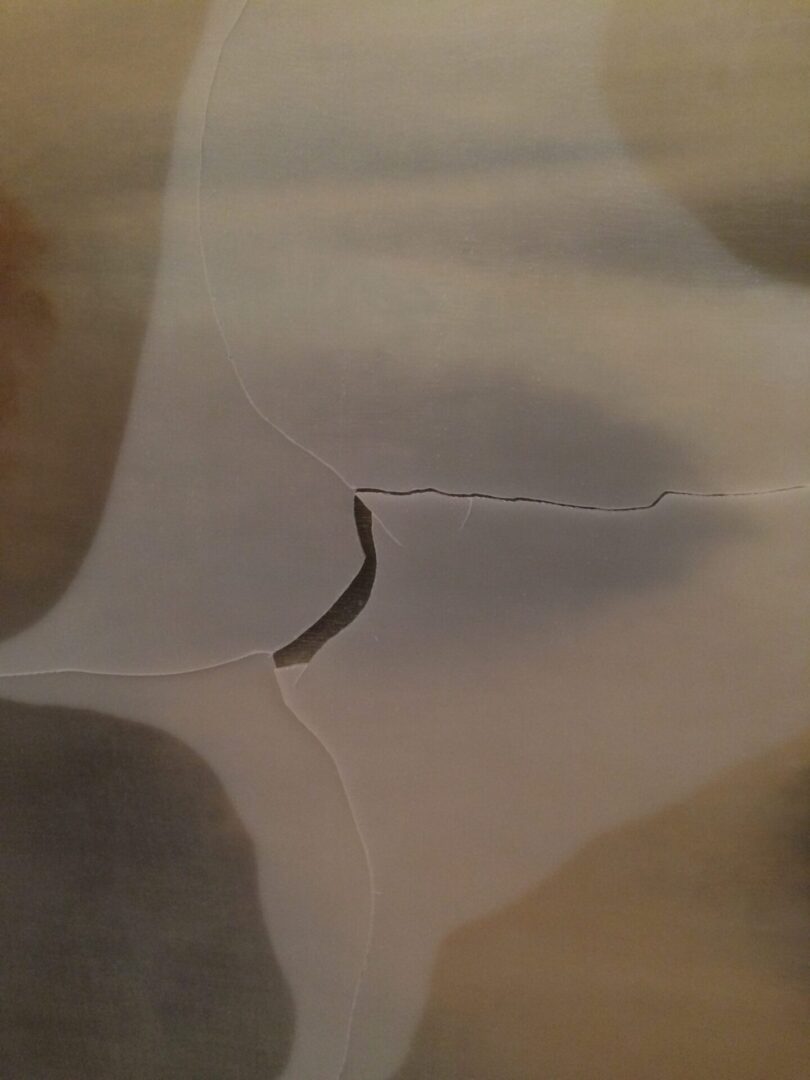
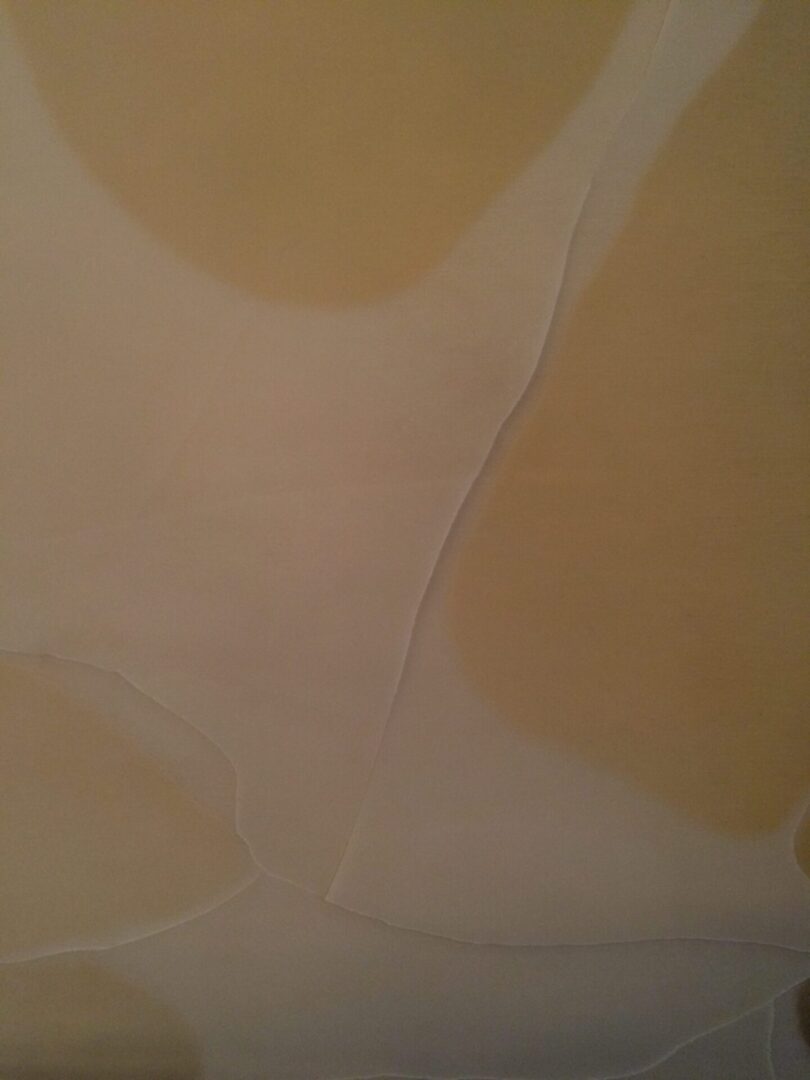


Portrait with dog - Oil on canvas - 19th century
On left: painting before conservation. Losses in the paint layer, with darkened varnish and layer of dirt.
On right: painting after conservation. The surface was cleaned and the varnish removed. The losses were inpainted, and a new varnish was applied.
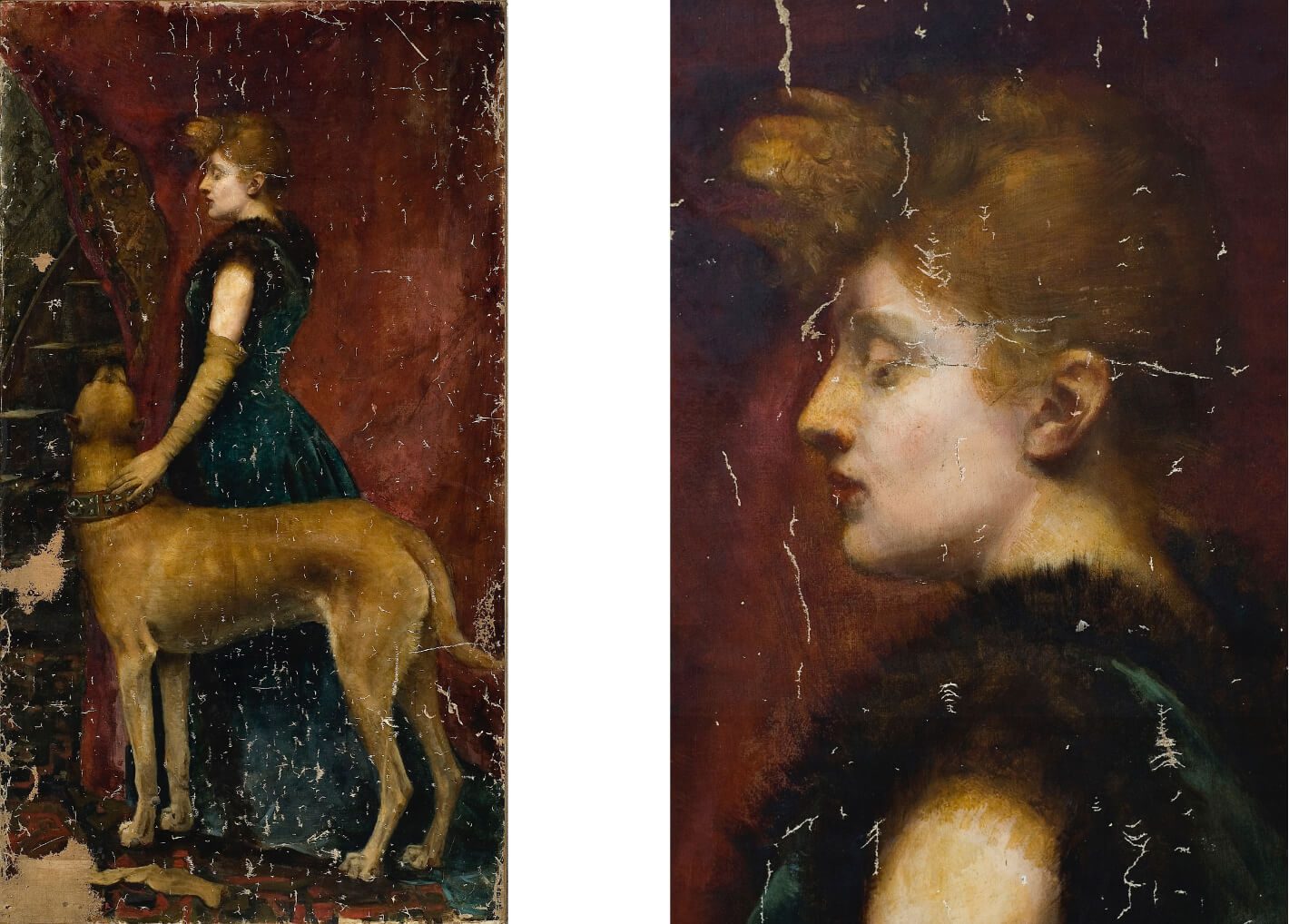
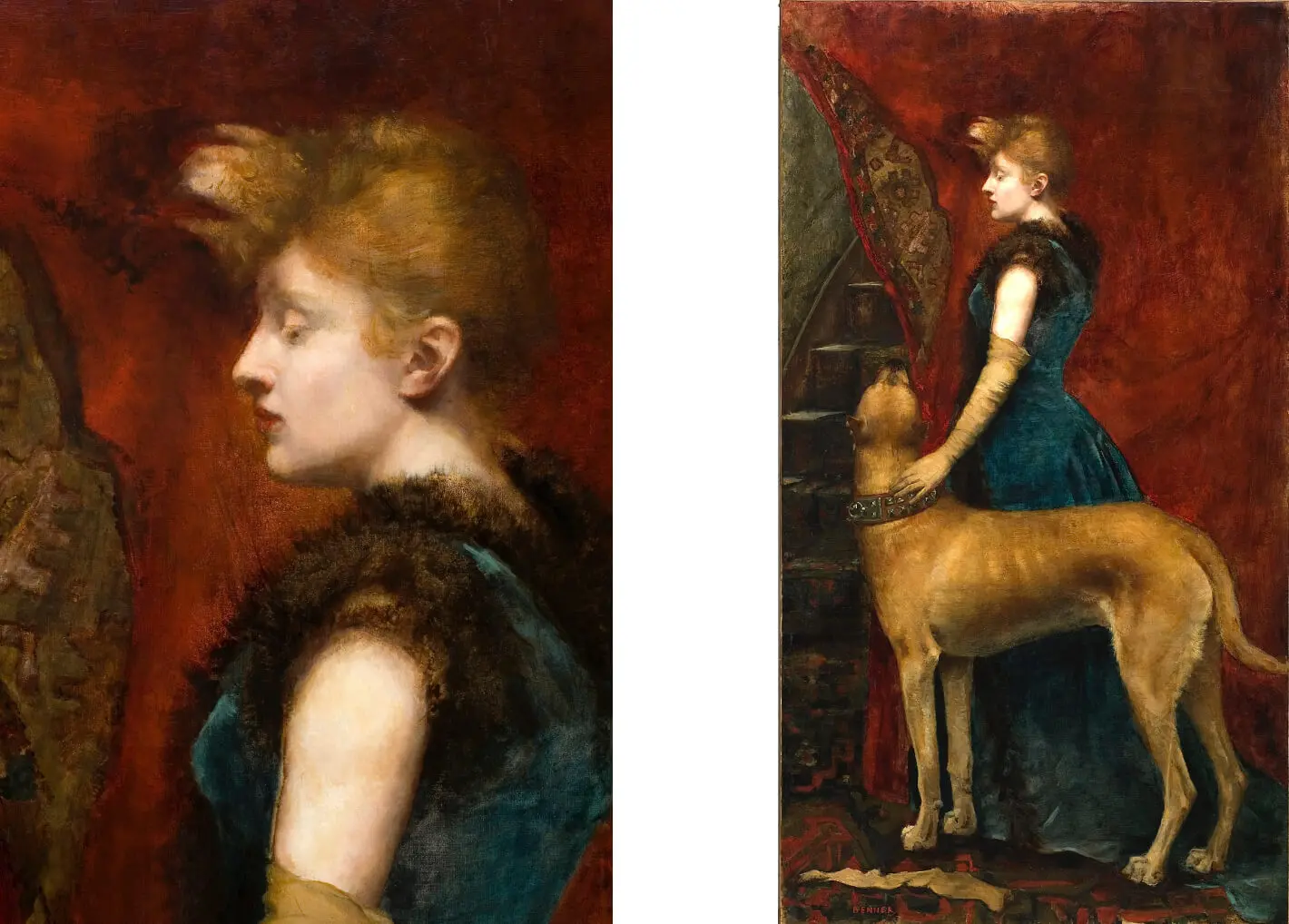
Icon - Tempera on wooden panel - 18th century
On left: icon before conservation. The panel was separated in two by a large crack, resulting in significant losses in the paint and gesso layer.
In middle: icon during treatments. The panel was joined and glued back together.
On right: icon after conservation. The wood losses after the reconstruction of the panel was filled, and the paint layer was restored.
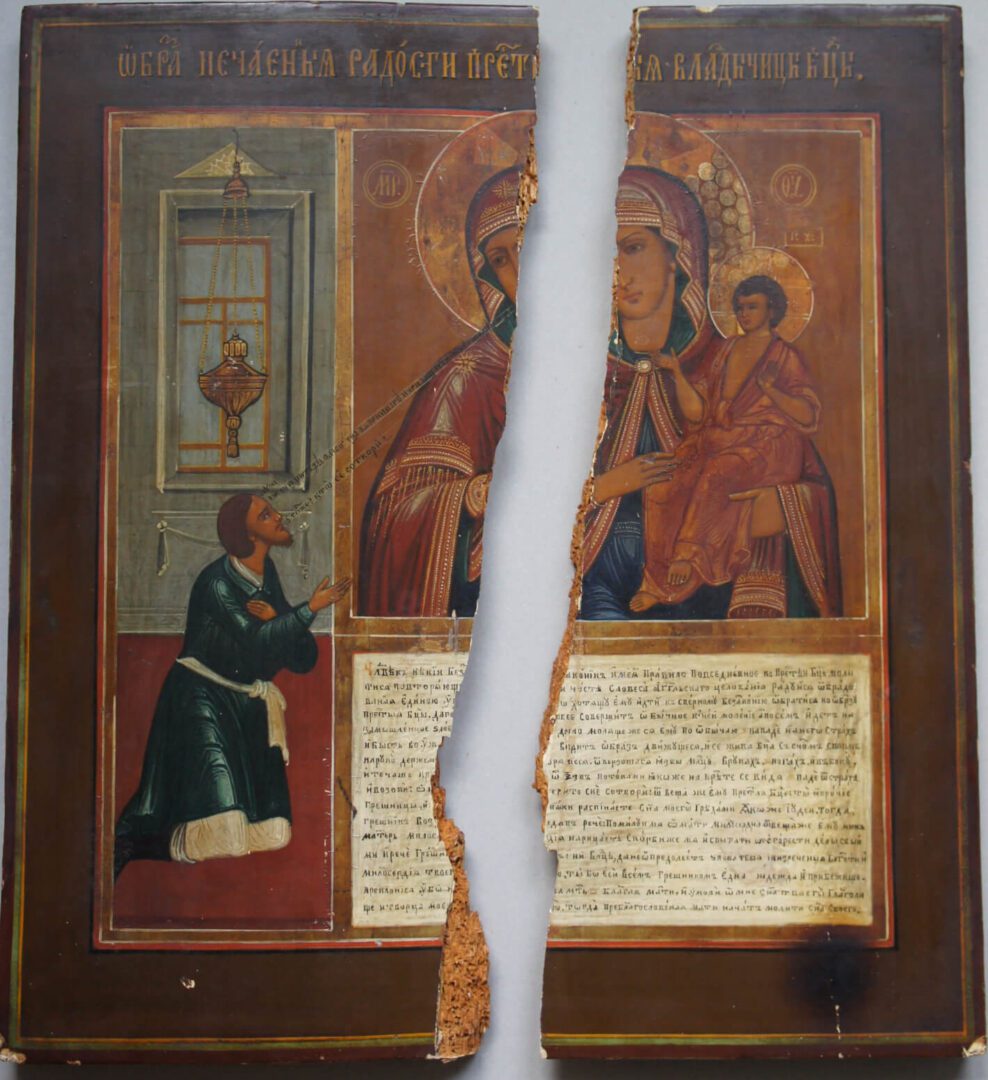
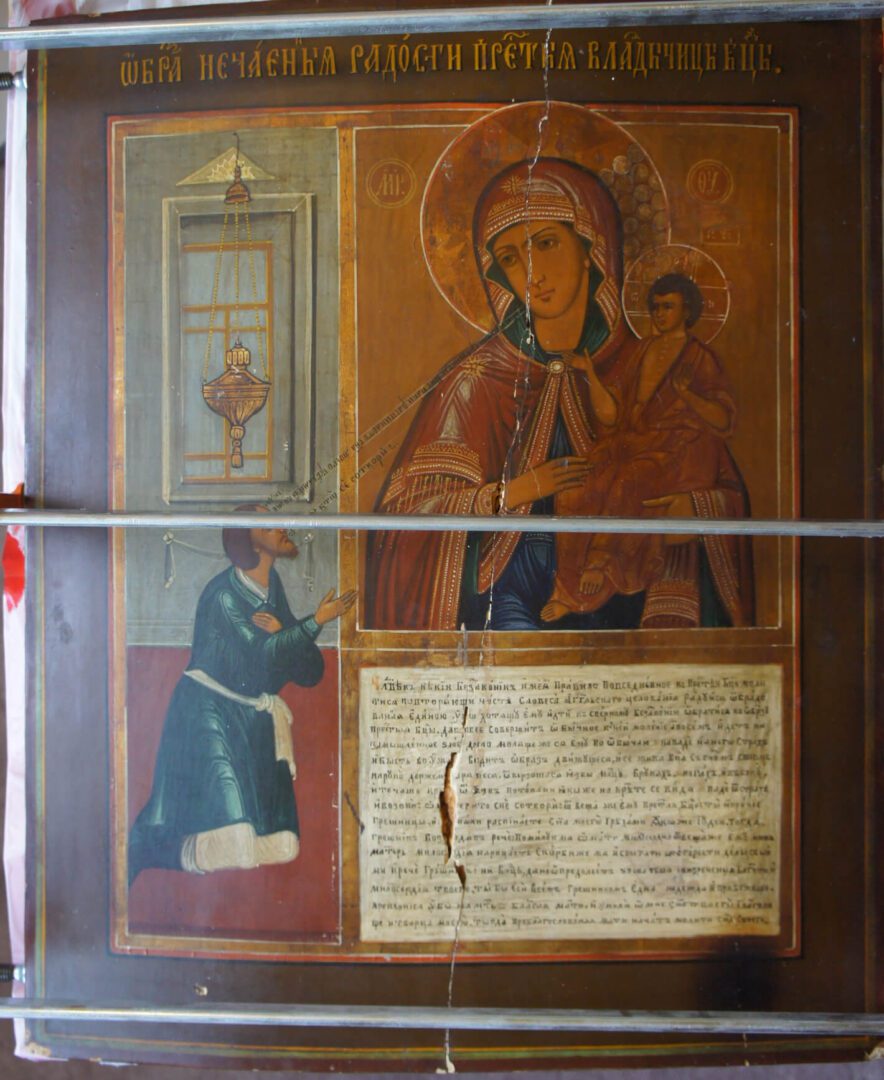

Spring Rain by Julie Ledgerwood - Acrylic on canvas - 21st century
1st Row: painting before conservation. Various crayon marks are visible across the surface of the painting, as well as a tear that disturbs the visual perception of the work.
On right: painting after conservation. Appropriate solvents were chosen and utilized for cleaning the crayons, and a patch was applied to the back of the painting with beva adhesive film. It was then inpainted after an application of gesso.


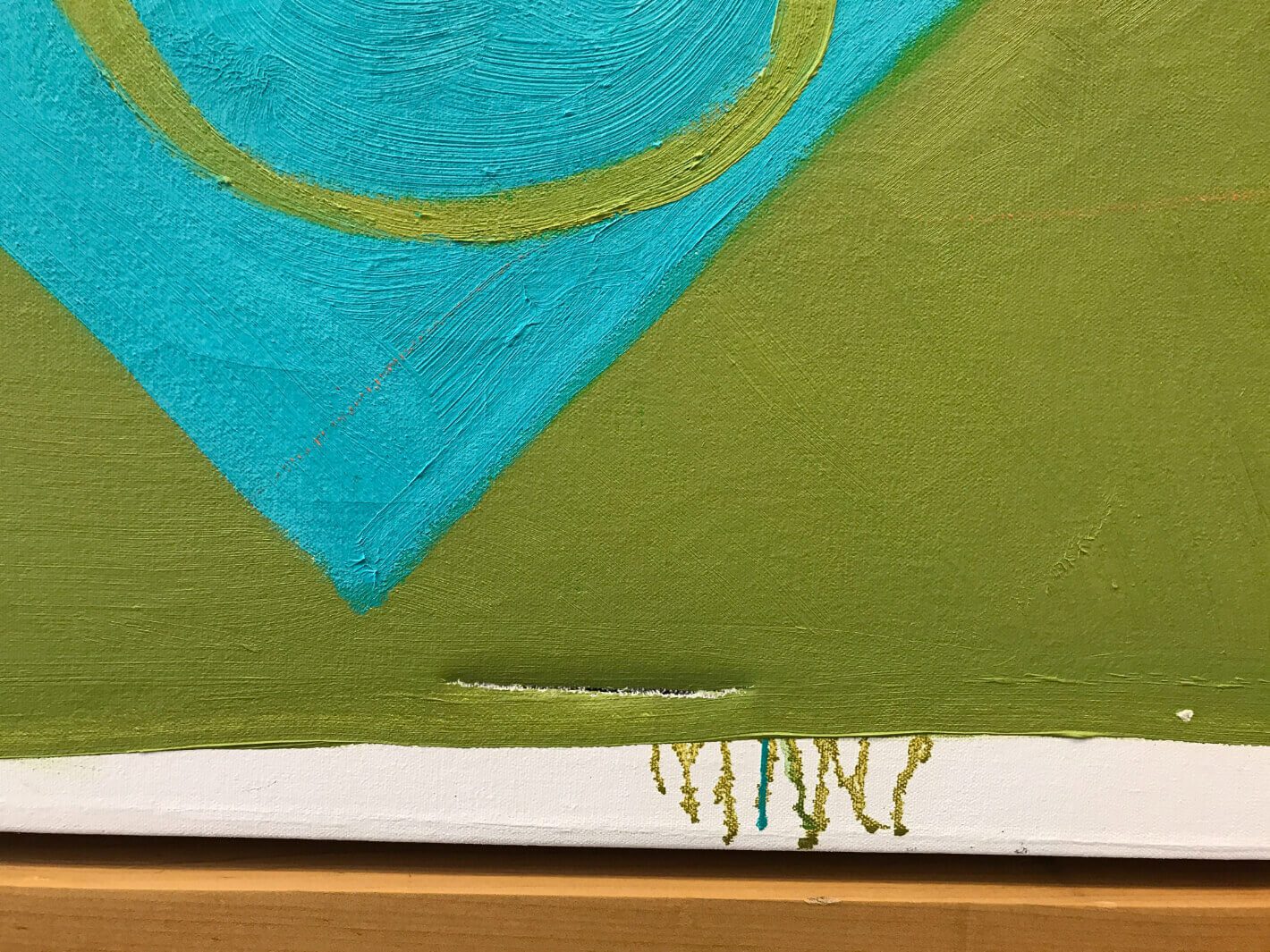
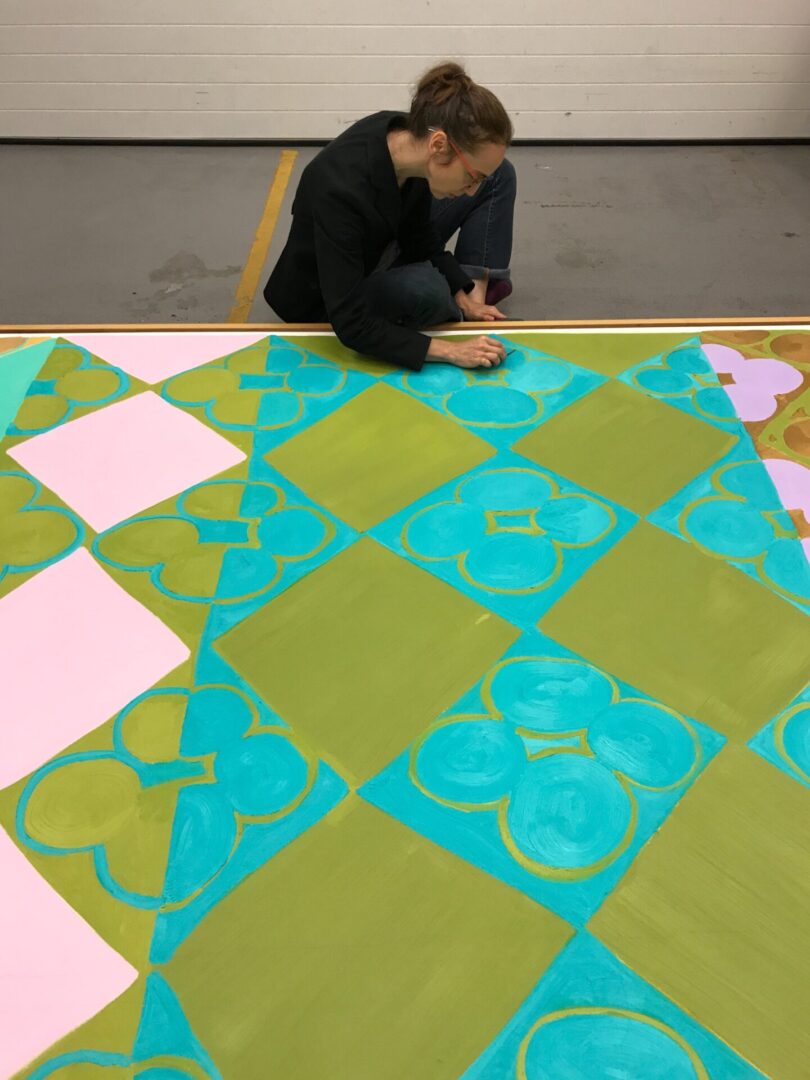

Untitled by Hiro Yokose - Oil and Wax Painting
1st Row: Before and during conservation.
2nd Row: After conservation.

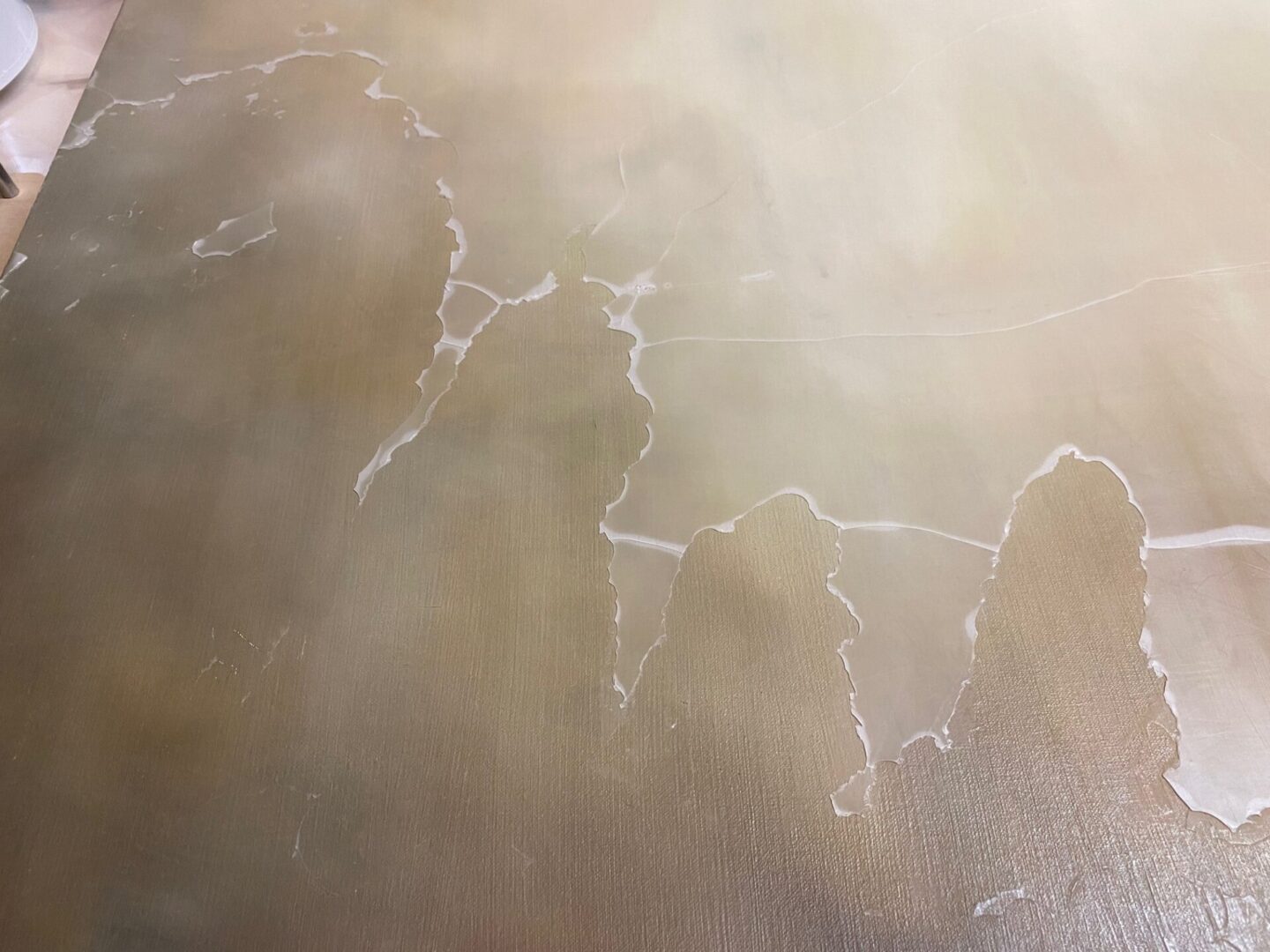
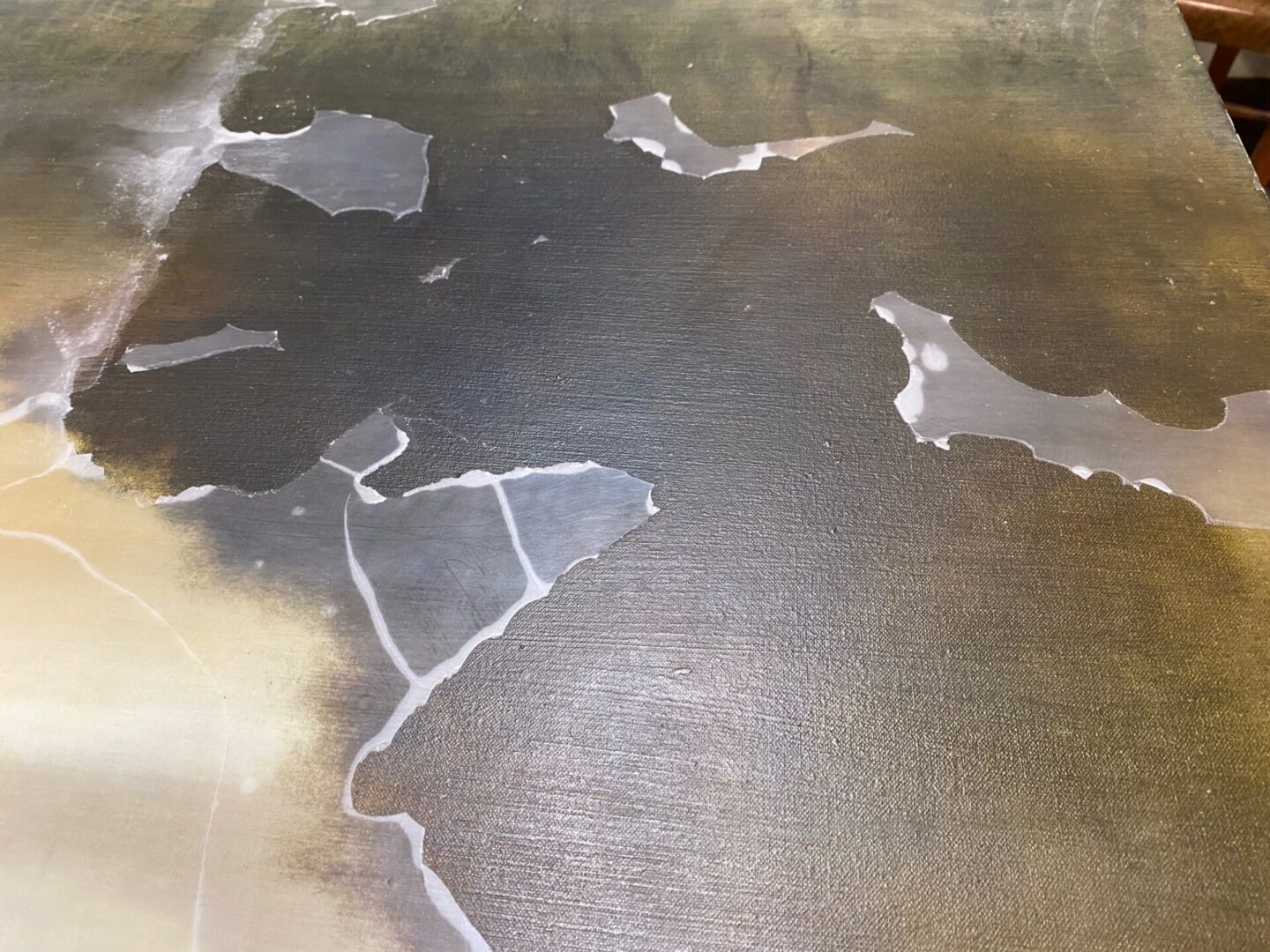

Untitled by Hiro Yokose - Oil and Wax Painting
1st Row: Before and during conservation.
2nd Row: After conservation.
